Here’s a humble little Pinus thunbergii, sitting on my work stand.
I’ve used this line before, but….That looks like the back…

I’ve been studying this tree for about a month and a half or so. I like this as the front:

I got the tree from the last Multi-Club Picnic and Auction hosted by the Bonsai Society of Brevard. It’s a huge affair with, as the name implies, members of multiple clubs participating. I’m the VP of the Central Florida Bonsai Club and we take care of the silent auction aspect. I also help out with the live auction part, acting as the runner and such. This year we had members of clubs from as far away North as Jacksonville and South to Miami (the auction takes place in Cocoa Fl, about halfway down the length of the state).
There were more than 60 people in attendance, representing about 10 Florida clubs, over a hundred items for live auction, more than 200 silent auction items, and the highest amount bid on a tree was $880, on a medium sized Brazilian Raintree. There are usually many deals to be had and it’s a good place to sell off bonsai materials that you’ve grown out of, be it pottery, tools, or trees. Many old timers use the auction to thin their collections of trees they can no longer pick up, meaning you can get a good tree, well developed, for a good price.
Needless to say, I was busy and couldn’t get a bid in on todays pine, which was offered on the silent auction by one of my first mentors, Mike Rogers.
Mike is a workhorse and amazing Florida artist whose been doing bonsai for about as long as I’ve been alive.
And yes, we can grow, work, and even get thriving, black pines in “la florida”. They grow all the way down in Miami, too….the whole concept of them needing dormancy is a bit more complicated than you’ve been told. That may need a separate blogpost, dormancy and what that means for different species. Hmmmmmnnn…..
Anyway, I’m thinking this angle might work better.

Let’s get a look at the roots…Ahah! Look at that!
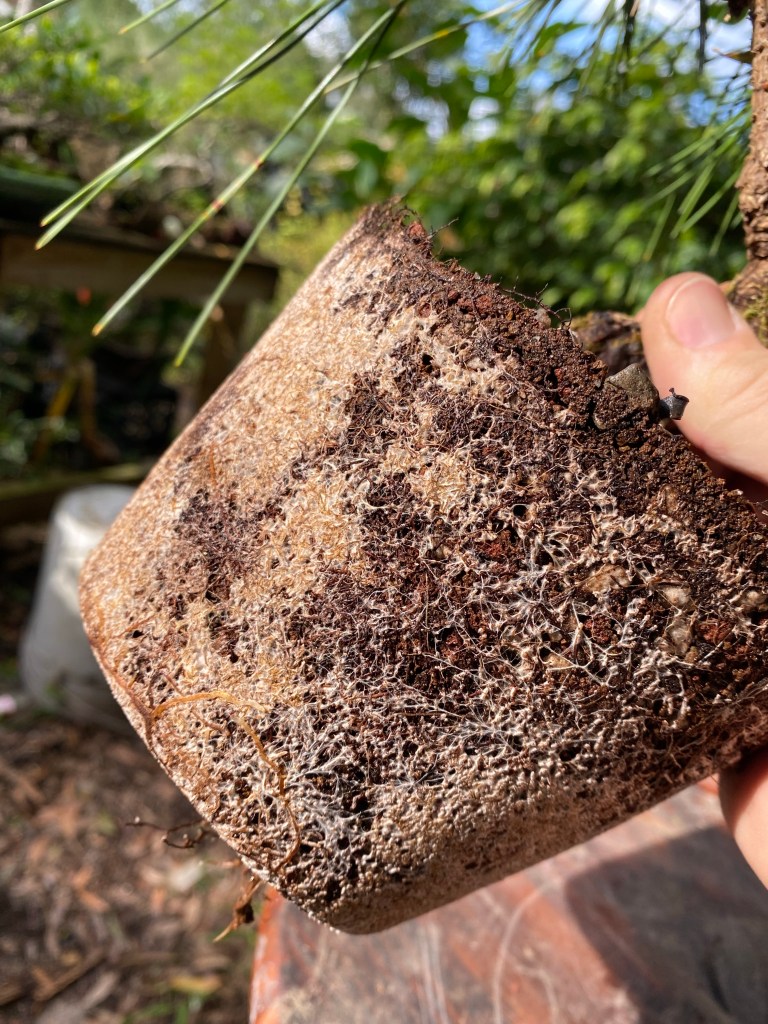
Sweet, sweet mycorrhizae. That’s a good thing. Mycorrhizae is a beneficial fungus in a symbiotic relationship with the tree where the fungus provides nitrogen to the pine in exchange for sugar. Kinda like how the Venom symbiote provides enhanced strength and durability to its wearer in exchange for brains. Or a chemical in brains called phenethylamine (or in chocolate. You’ll have to watch the Venom movies to understand the reference).
Now, as to why plants, and pines in particular, need mycorrhizae to thrive, there’s a whole discipline in evolutionary science that tries to explain this. For example, in humans, we are in symbiosis with thousands of bacteria, on our skins and especially in our guts, that help us to survive (read this interesting article on E. coli). It used to be thought that there were more bacteria cells in a human body than human cells (as they say in the article). That sounds poetical, but someone did the math and it’s not true. Damn mathematicians are always ruining the poet’s dreams.
The fact of pines and mycorrhizae is that they need the relationship to absorb water and nutrients. If your pine is not doing well, you might need to add some mycorrhizae.
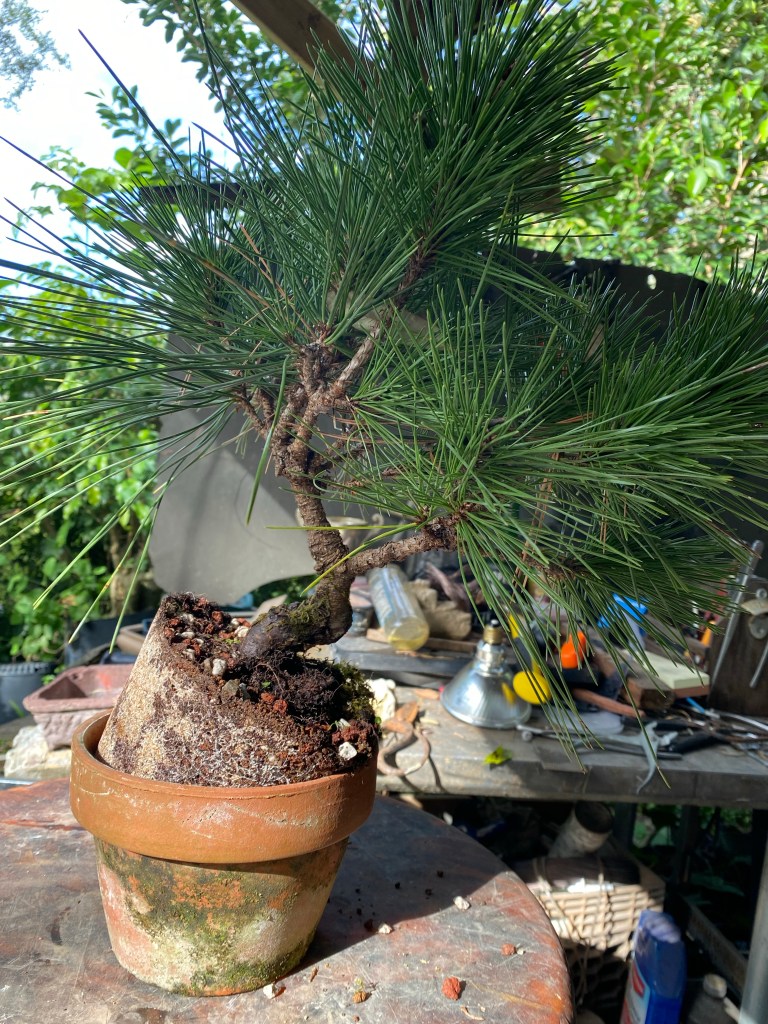
They need to be fairly dry as well. Enter the pond basket.

The pond basket, root maker, Accelerator pots, or, if you can’t find any of those, the infamous colander; it’s a hot idea right now. The question is: why? Many don’t ask why but, as is in the name “Adamaskwhy” that’s my job.
First, they work. They work for the intended purpose of filling a pot with roots. The concept is one called “air pruning”. In the ground, a plant can send out roots almost forever (until the water carrying capacity of roots and branches is reached. You can only suck water through a tube so far using capillary action and the process of transpiration), but in a pot, once the roots hit the sides, they tend to start circling the pot. Since it’s only the tiny feeder roots that can absorb water, the big fleshy “anchor” roots start to take up too much space and choke out the plant, not leaving enough room for the feeder roots. This is why repot bonsai, we prune out the big roots to make way for new feeder roots.
The air pruning effect works when the roots reach the side of the pot, they try to grow out of the holes, but once they hit the air, drying the tips, it effectively “prunes” the root tips, forcing them to “backbud”, so to speak, and the roots begin to use more of the soil space inside the pot instead of just getting longer and circling around.
This works best in the short term, especially on trees that don’t appreciate regular root pruning (á la our Pinus) and makes the job of potting the tree into a bonsai pot easier, as you have a well ramified and mature root system to work with.
Be aware, this greatly accelerates the need to repot or up-pot, as the concept works for its intended purpose (growing roots) as I said above. You can grow and develop trees faster in air-pruning systems. But some trees just grow too fast in them and can suffer, like a ficus for instance (and ficus don’t need help growing roots, generally, anyway). And the pot will tend to dry out the root ball faster, so be aware of that. Which isn’t a bad thing, the drier the roots at night (but, don’t abuse them) the faster a tree grows.
I’ve discussed this before, so here’s a quick recap. In the day, the tree takes in CO2 through the leaves, water through the roots, and uses sunshine as the power source, in the process of photosynthesis, to make sugars. At night, the tree takes in oxygen, through the ROOTS, and burns that sugar to make new cells, in a process called respiration. Therefore, if a tree’s roots are wet at night, it’s not going to be able to breathe in that oxygen very well, resulting in slower growth.
Getting back to the tree, I’ll be (GASP!!’) using akadama in my mix today, as pines love it.

It’ll be mixed about 50/50 with my usual Adamaskwhy SuperMix™️.

A quick sifting to get rid of the dust (lots of dust in akadama)….

Tie down wires for the pot….

And we are ready to chop!

Pines tend to grow branches in structure called “whorls”. Yes, not whirls, whorls. Sounds the same and kinda the same concept but not precise. A whorl is a spot on the branch or trunk where all the nodes (where new branches emerge) grow around the branch. The dictionary says: a radial arrangement of three or more petals, stamens, leaves, etc, around a stem.
Think of a wagon wheel, with the hub being the branch, and the spokes are the branches. This is awesome in one aspect, as we can choose whichever branches to use for the tree, but if we keep them all, we will get a fat nub or ball, and that’s not good bonsai practice, generally. We want taper from thick to thin, with smooth lines from bottom to top. A nub stops the eye from moving up the trunk.
Below, you’ll see a nub forming on the whorl.

Here as well.
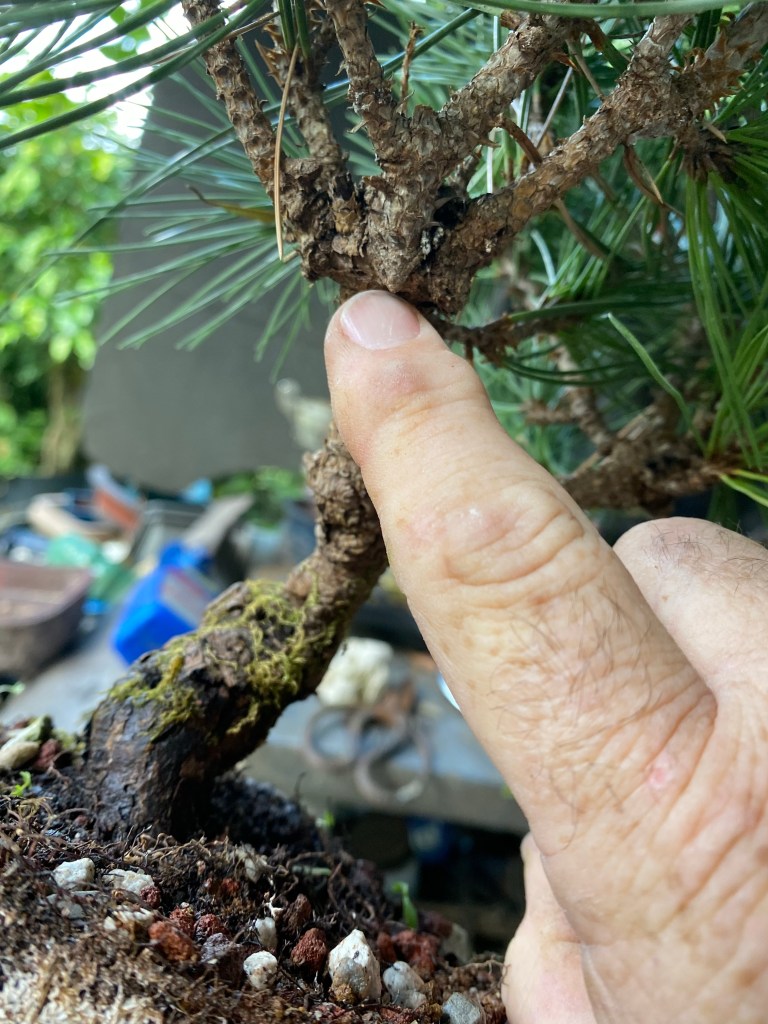
Although it’s natural for this to happen, it doesn’t look natural.
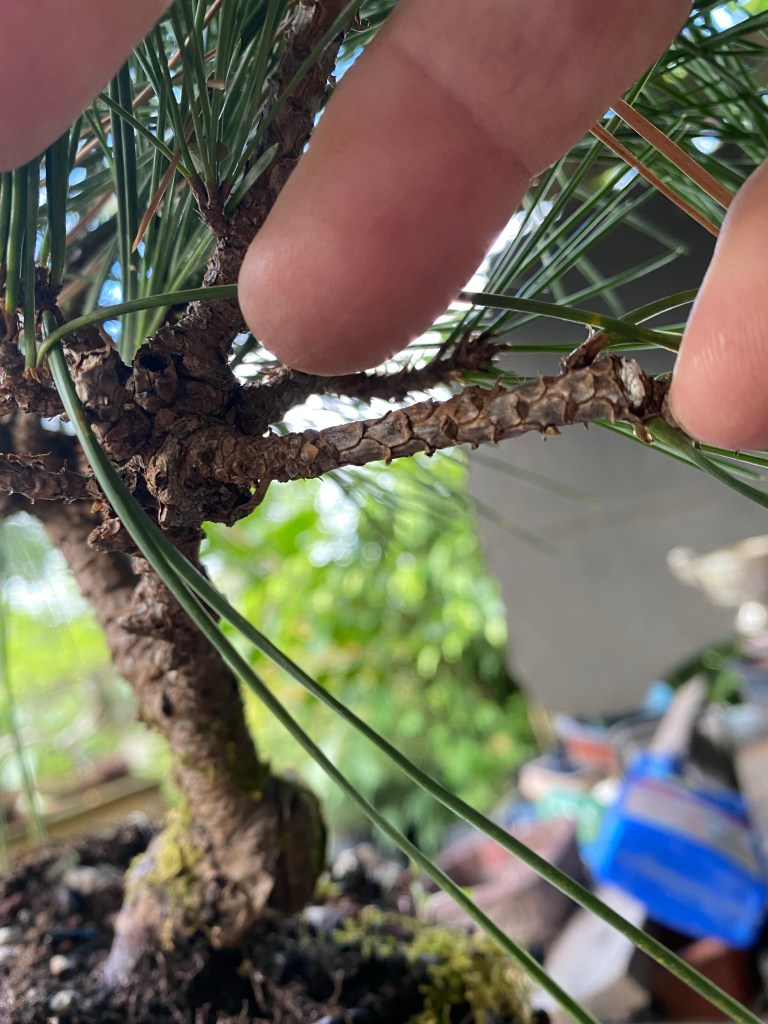
So we need to start pruning out the superfluous branching (in nature, the tree, mostly, will get rid of those by themselves, the shaded, weak, and ill positioned buds, and you tend to get just one branch at each node, or whorl. But not all the time. Especially in bonsai, as we spoil them with nutrients and water and proper light, the tree doesn’t need to get rid of weaker branches. It’s our job to artificially choose what’s needed or not, ironically, to make it look more natural.
Here’s a review of Bonsai:101.
We need a branch going up to make the top:
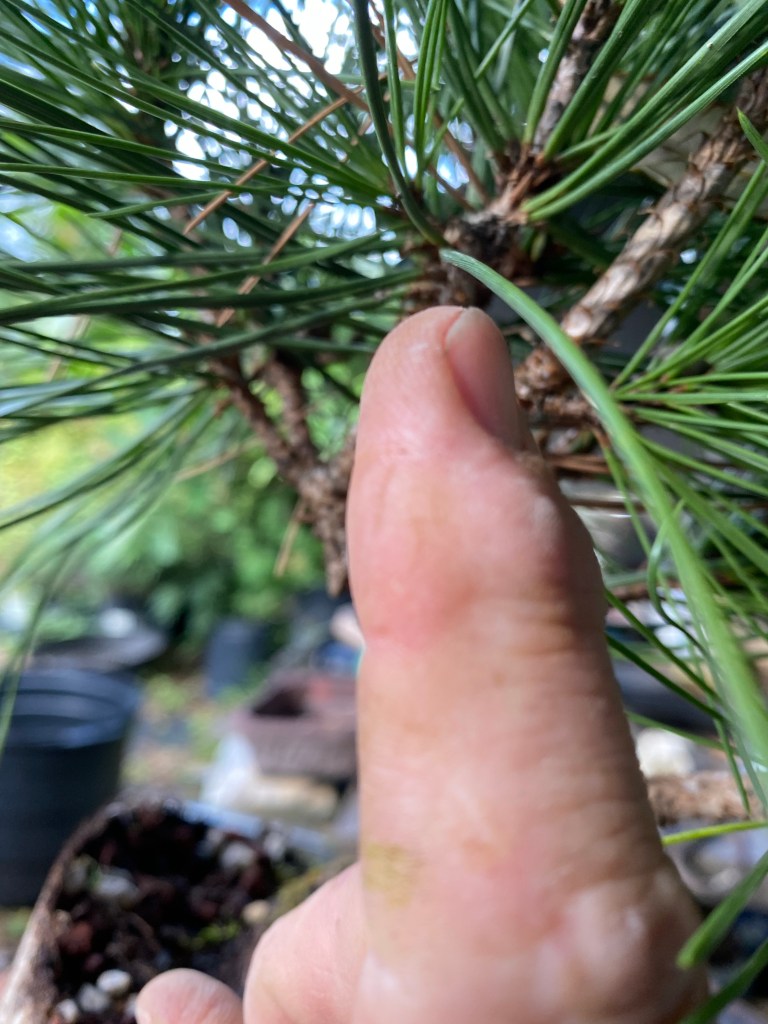
We need a side branch going left, or right, to emphasize movement…
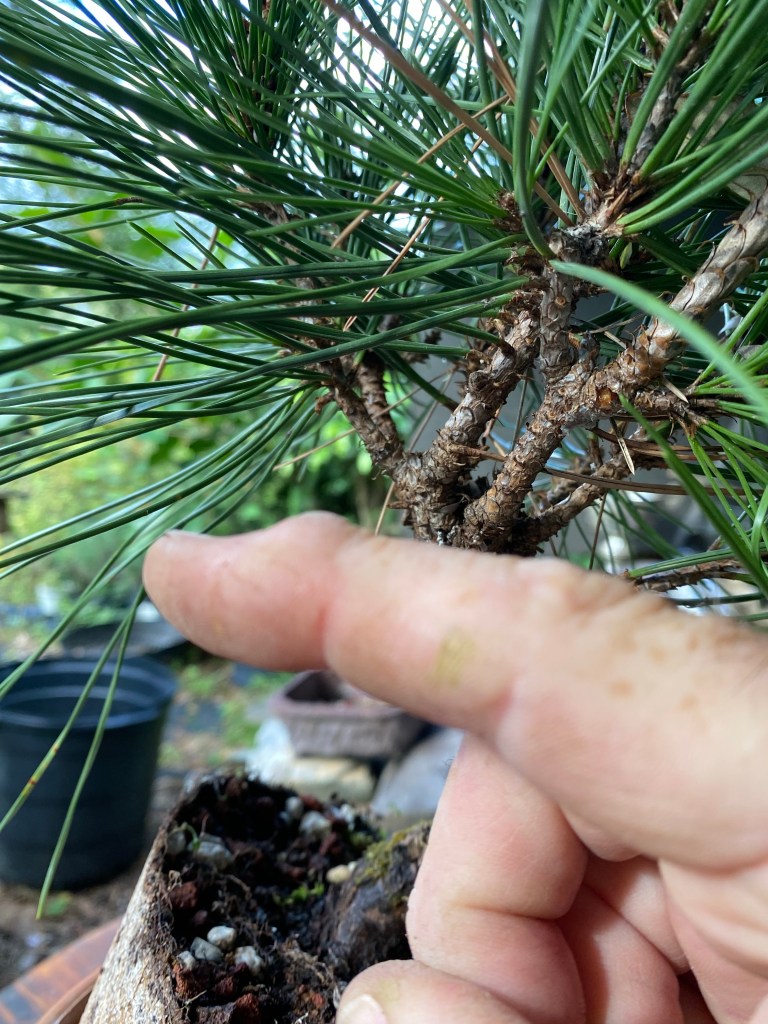
A back branch, for depth…

Another branch going the opposite direction from the first, for balance….

And sharp scissors to edit out everything else.

As I prune, you’ll see the knobs created by the whorls.
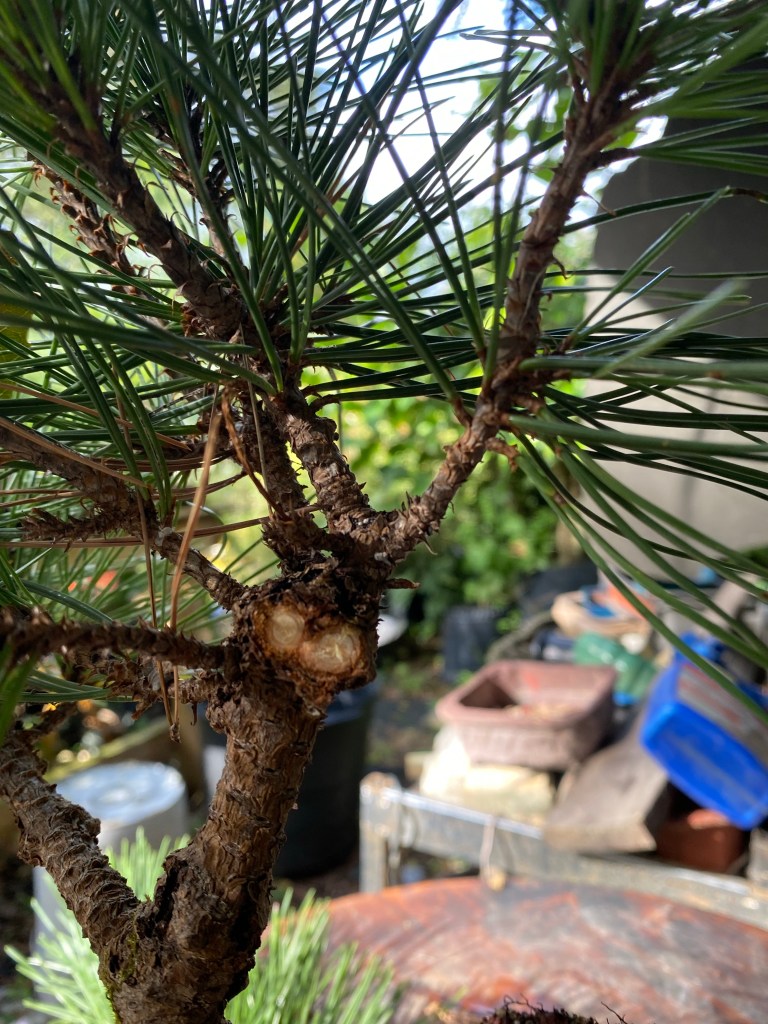

We will use a knob cutter (appropriately named) to help reduce those knobs.
Which ones to get rid of?

There we go.
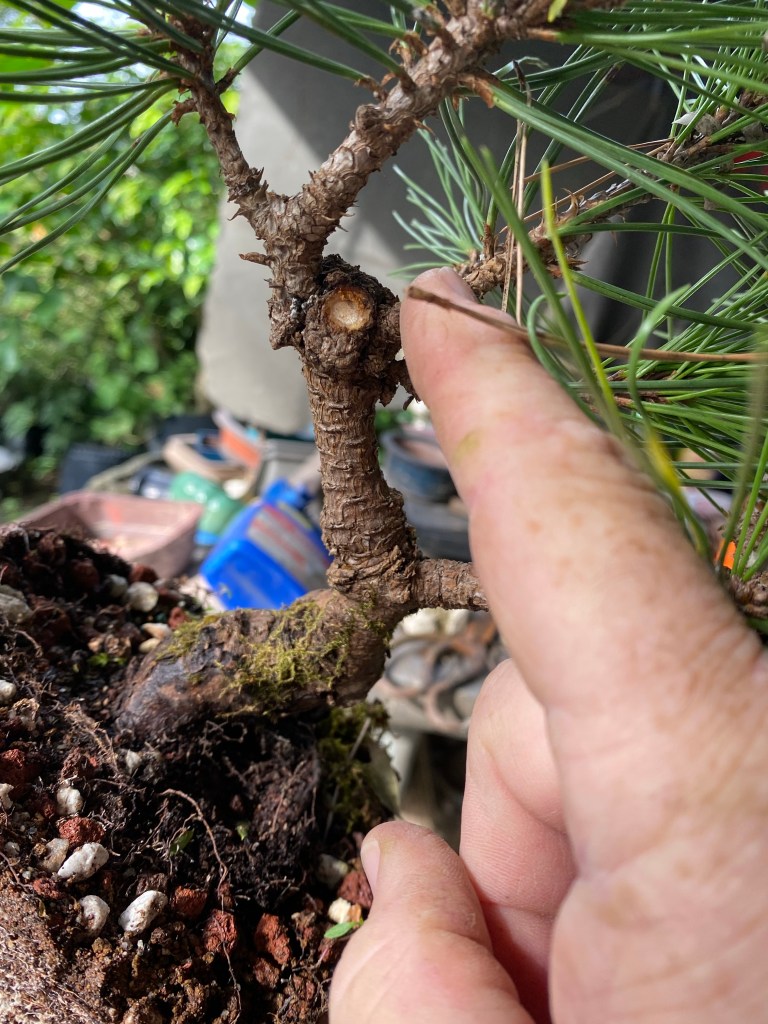
Knob removal…
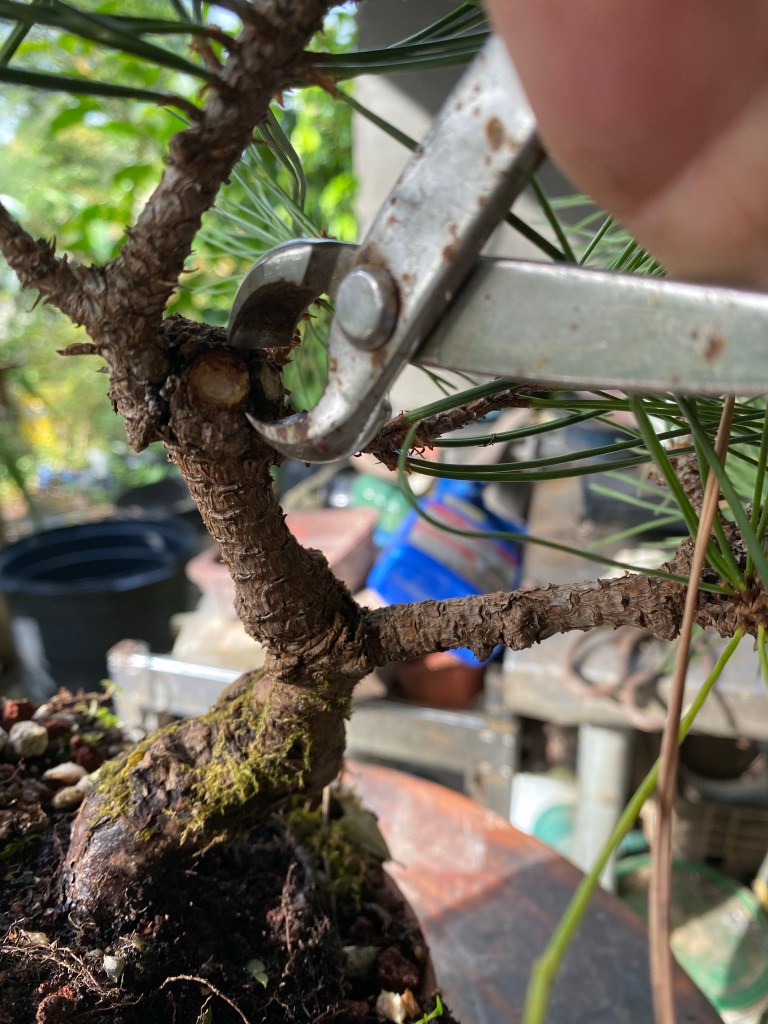
Now to look at the first branch. It’s almost like a hand.
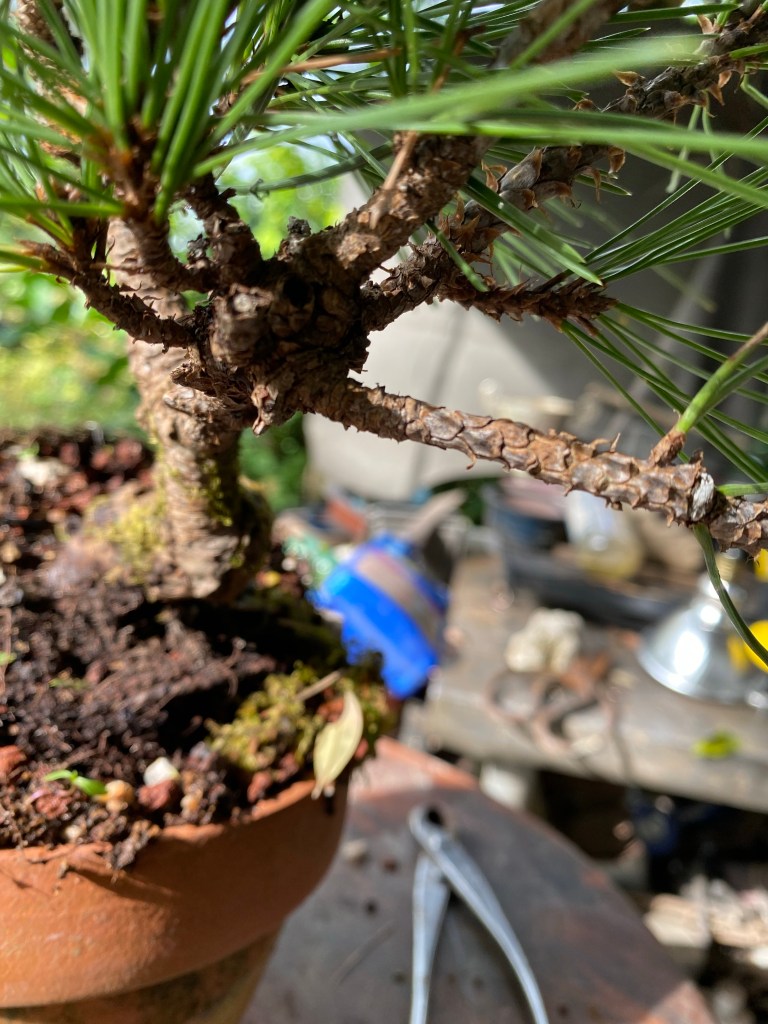
Snip….

Getting there…

And that’s about a third of the tree on the ground.

Next step, let’s remove some old needles. This is kind of like defoliating. Usually, a pine will keep a needle for three years. In bonsai, we want to hasten growth, and by removing old needles more often, say, once or twice a year, the tree will grow new ones more often. Without needles (or leaves) a tree can’t photosynthesize, obviously, so the act of removing needles makes the tree grow more.
The needle plucking can be tricky. Here’s how not to do it. You pluck the needle (or needles, they tend to grow in sets of two on a black pine called a “fascicle”) but you should leave behind the needle sheath (fascicular sheath, to be technical), as that’s where latent buds reside. Latent buds are what turn into new branches.
Grasp the needle (with fingers or tweezers), and pull straight out.

You should not see this:

I pulled the sheath with the needle.
It should look the pic below, sheath intact on the stem.

And you need to really look. Below is a new branch that was hiding under all the needles I plucked.
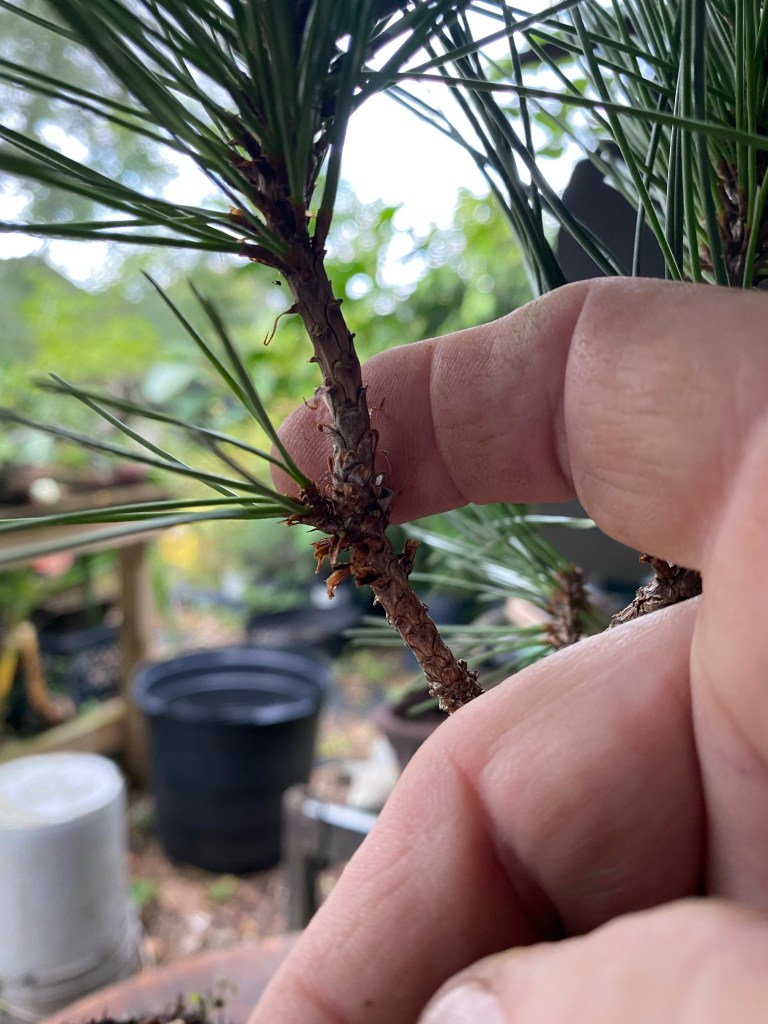
Now, if this tree were further along, I’d remove the needles on the tops and bottoms of the branches. But I’m not going to wire much today, so I’m not sure of the tops and bottoms (well, I kinda do, but they won’t be in position to grab the sunlight yet) and second, at this point I’ve removed half of the foliage with the branch selection and the wire removal, and a pine needs needles).
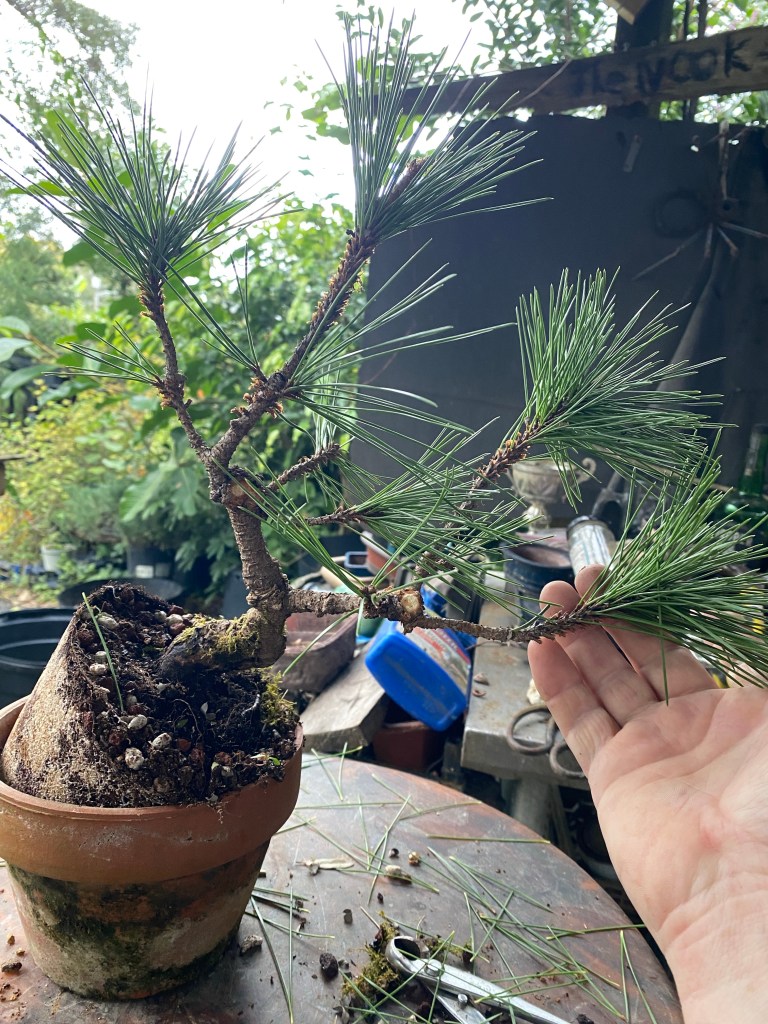
That’s enough insults to the top, let’s rough up the bottom.

I removed some crossing roots at the base of the trunk, and scraped away some old soil.
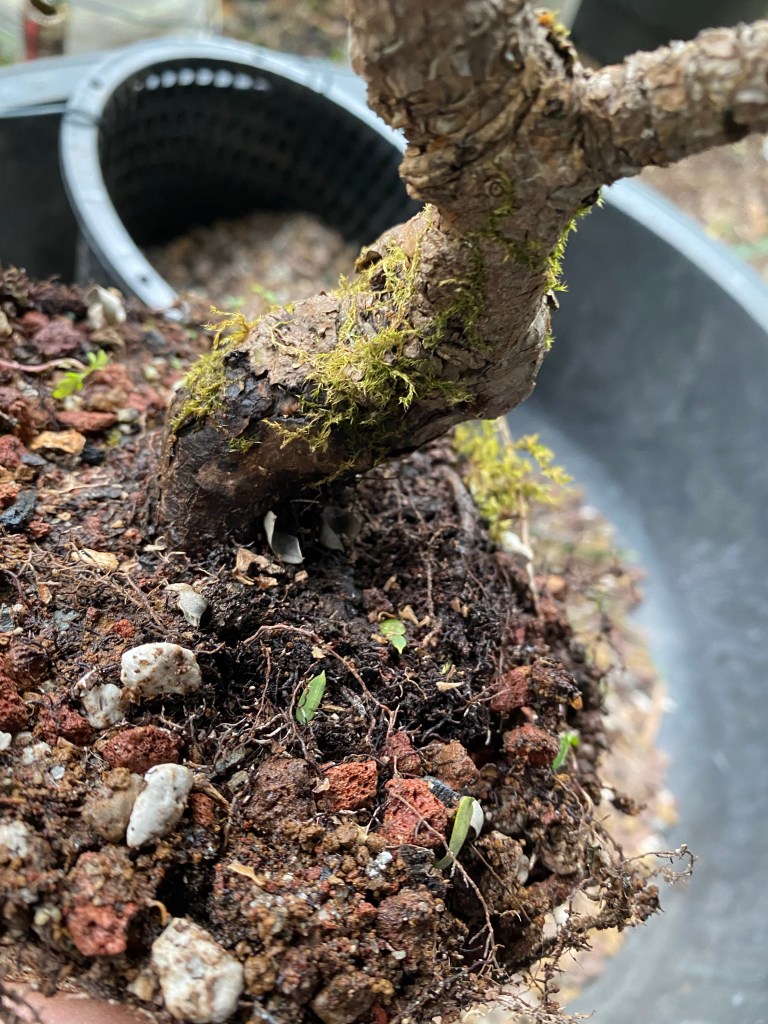
Then I scruff up the roots below. We want them to grow out, not around.
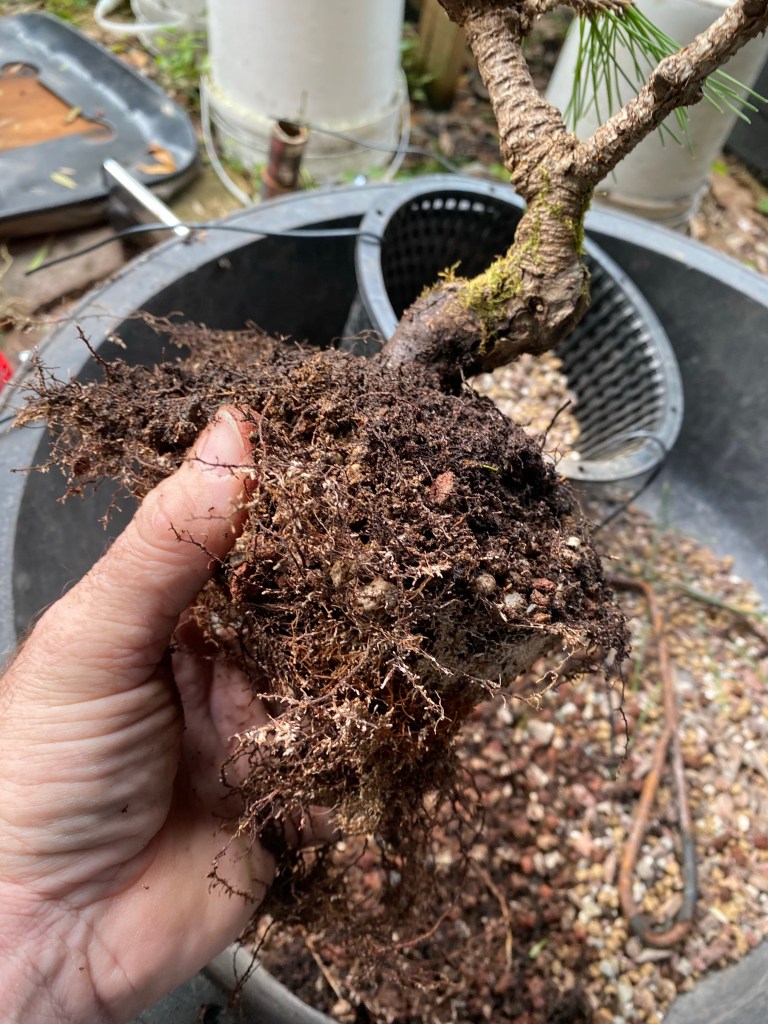
Put it in the new pot at the angle I need, the main trunk at a slight deviation from the perpendicular.
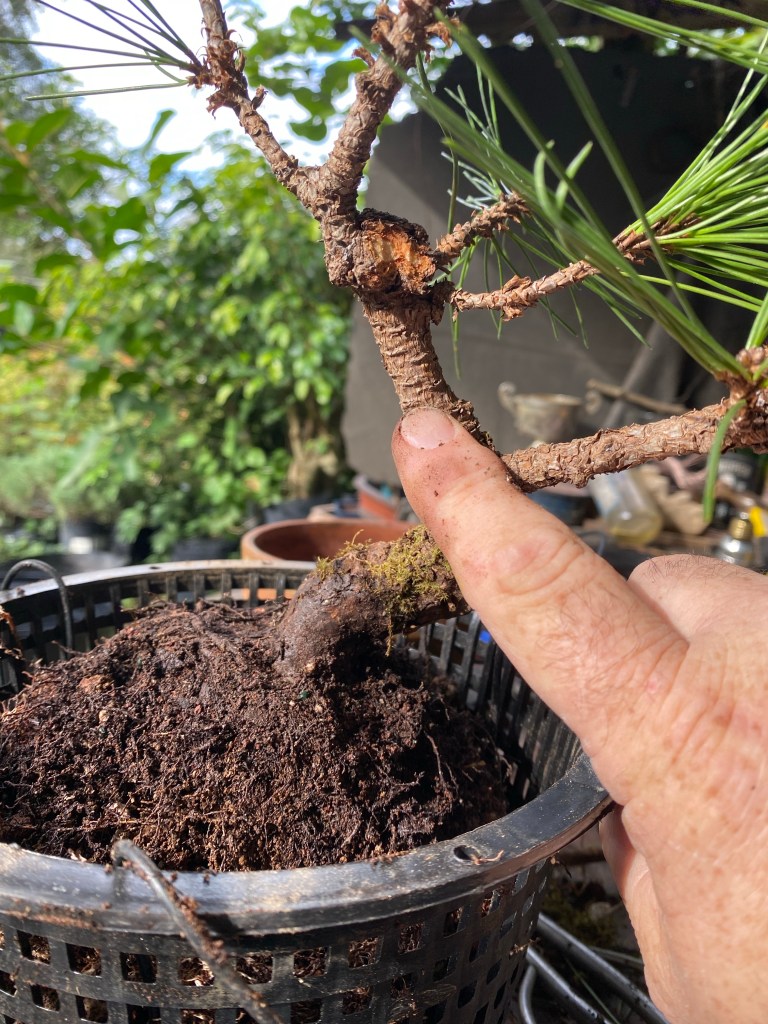
Tie it in…

Backfill, I’ll add some organic fertilizer at this time (remember, I’m in Florida, my growing season is off from yours, so I do things at different times of the year than you).

And I think I’ll use a guy wire to bend the first branch down a bit.

I could wire the tree, but that could add too much stress and I’ve stressed it enough already.

Lastly, to encourage back budding, I’ll cut the grow tips (called “candles” on pines) on the strongest branches, and especially the apical stem. Pines want to grow straight up and tall, so they send energy to the tallest and strongest growth tips. By cutting those, we remove auxin (the main growth hormone that regulates energy distribution) and the tree will send the energy to the buds I haven’t cut, and to the latent buds, and we get more branches.
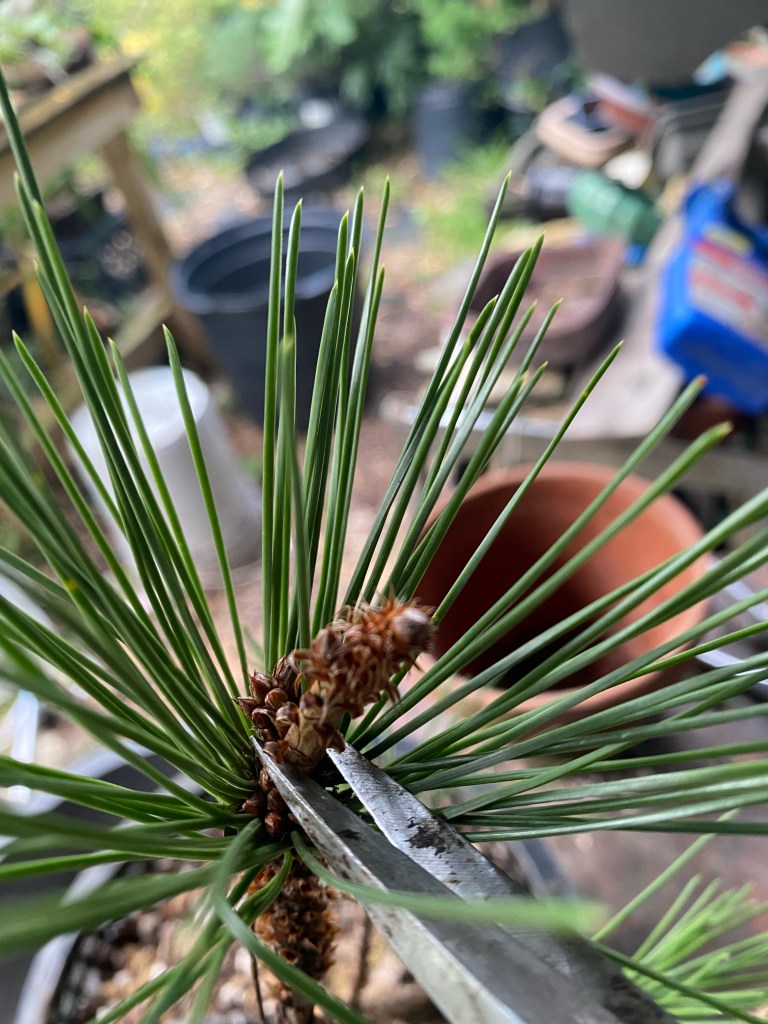
You can cut or twist with your fingers.

And that’s about all I can do at the moment. Water, sunshine, fertilizer, lullabies at night and heavy metal music in the afternoon. They like Metallica.

Now we listen to the tree, until it tells us what’s next.
What to do with the mess? Well, if you had a tree that needed it, you can use those branches you pruned off for grafting.

I don’t have any at that point in the development, so they go into the fire.

There’s nothing more soothing than the smell of pine needles burning in a fire.

Ahhhhhhhh…..
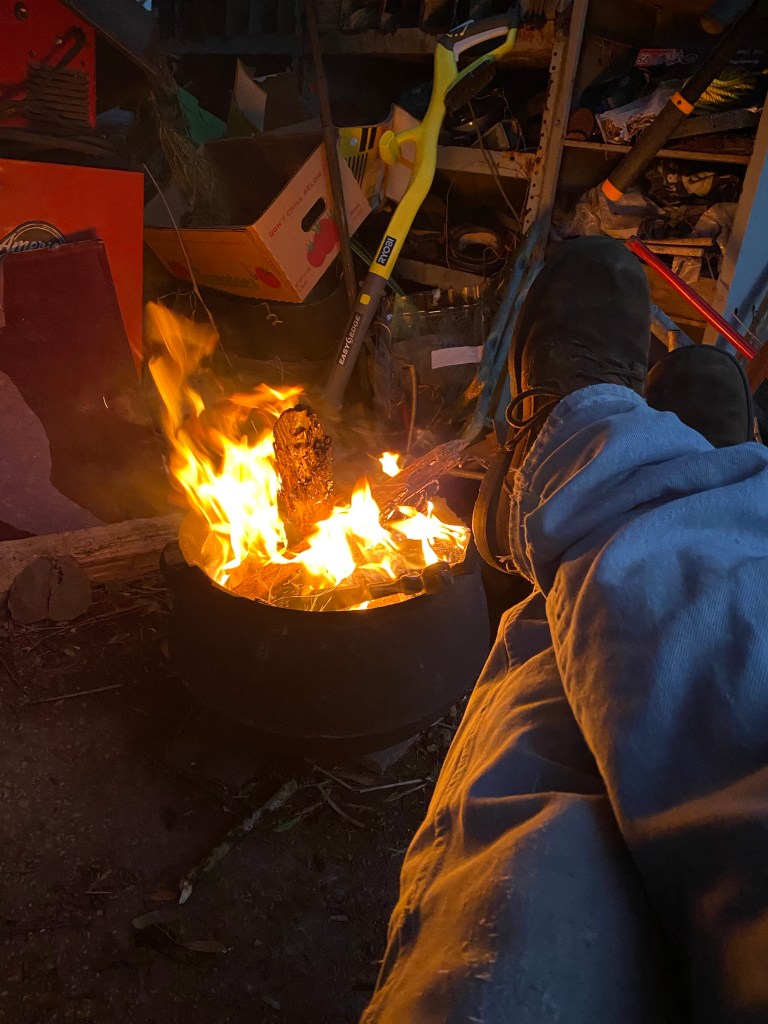
Dude, give your trees TOOL in the daytime, and Alice In Chains at night. Does wonders! I’m glad I read this article, it reminded me that I need to stop watering at night so often (as my schedule dictates), I need to set my automated system up again. I love the way you break things down in layman’s terms.
LikeLiked by 1 person
Ha…..sigh…. Good write up. Now I miss my black pine
Sent from my iPhone
>
LikeLike
My black pine is still a seedling, even after four years, but I can dream!
LikeLike
Now I want a Pine. I wonder the effect that 80’s funk will have on them!
LikeLike
What a great post about a tree that most of us Floridian Bonsai Folk are afraid of! At least most of us in south Florida anyway.
Thanks for helping to demystify the JBP.
LikeLike
I really appreciated this post. I live in Tampa and have about 10 JBP seedlings that I planted last year. They seem to be doing well. Any idea how old your new tree is?
LikeLike
With how thick the trunk is, less than an inch, I might guess no less than 5 yrs old, no more than 7 or so.
LikeLike
Reblogged this on Wolf's Birding and Bonsai Blog.
LikeLike